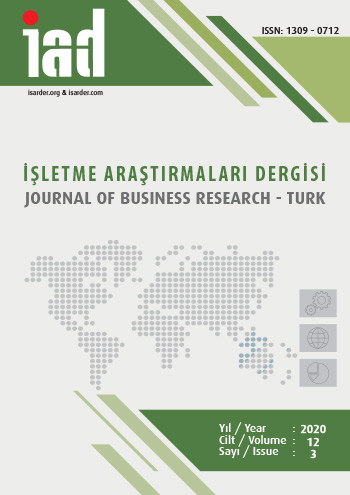Ticari Kredi Faiz Oranlarının YSA NARX ve VAR Modelleri ile Öngörülmesi
Forecasting Commercial Credit Interest Rates with ANN NARX and VAR Models
Author(s): Meltem Karaatlı, Esranur Demirci, Ahmet BaykaldıSubject(s): Supranational / Global Economy, Business Economy / Management, Economic development, Financial Markets
Published by: Orhan Sağçolak
Keywords: Commercial Loan; Interest Rates; ANN NARX Model; VAR Model; Forecasting;
Summary/Abstract: Purpose – In this study; commercial loan interest rates which are one of the important indicators of economic development, generally occur in medium and long term, and have a determining effect on private sector investment decisions was tried to be predicted with Artificial Neural Networks (ANN) Nonlinear Autoregressive Exogenous model (NARX) and Vector Autoregressive (VAR) models. Design/methodology/approach – For this purpose, six macroeconomic variables, which are thought to have a direct or indirect effect on the interest rate applied by banks to commercial loans, were identified. The data used in the study were obtained from EVDS (Electronic Data Distribution System), Investing and Paragaranti databases and cover monthly data from January 2010 to June 2019. The performance of the prediction study with YSA NARX Model has been compared with the VAR Model, which is a predictive modeling technique with a linear model featuring a high predictive power. Findings – As a result of the analysis, it was observed that the non-linear ANN NARX Model results are very good compared to the VAR Model, which has the feature of linear model by looking at the results of four different performance values (MAD, MAPE, MSE, RMSE). As a result, nonlinear modeling has been shown to give better results for the prediction and forecast of commercial loan interest rates, which is an important macroeconomic indicator. Discussion – Financial markets in emerging countries such as Turkey are hypervariable, fragile and highly sensitive to political and social risks. Therefore, it is not possible for macroeconomic variables to be located on stationarity. In such economies, it is quite difficult to obtain accurate and consistent results from the foresight studies conducted through the regression analysis based on the time series data set. For these reasons, it has been determined that the methods that are able to model the presence of nonlinear relationships of variables that may lose their stationarity, give more accurate results.
Journal: İşletme Araştırmaları Dergisi
- Issue Year: 12/2020
- Issue No: 3
- Page Range: 2327-2343
- Page Count: 17
- Language: Turkish

